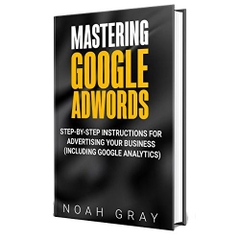-
-
-
Tổng tiền thanh toán:
-
-
Thông tin
-
Tìm sách theo yêu cầu
Learn and implement quantitative finance using popular Python libraries like NumPy, pandas, and Keras
Key Features
Understand Python data structure fundamentals and work with time series data
Use popular Python libraries including TensorFlow, Keras, and SciPy to deploy key concepts in quantitative finance
Explore various Python programs and learn finance paradigms
Book Description
Python is one of the most popular languages used for quantitative finance. With this book, you'll explore the key characteristics of Python for finance, solve problems in finance, and understand risk management.
The book starts with major concepts and techniques related to quantitative finance, and an introduction to some key Python libraries. Next, you'll implement time series analysis using pandas and DataFrames. The following chapters will help you gain an understanding of how to measure the diversifiable and non-diversifiable security risk of a portfolio and optimize your portfolio by implementing Markowitz Portfolio Optimization. Sections on regression analysis methodology will help you to value assets and understand the relationship between commodity prices and business stocks. In addition to this, you'll be able to forecast stock prices using Monte Carlo simulation. The book will also highlight forecast models that will show you how to determine the price of a call option by analyzing price variation. You'll also use deep learning for financial data analysis and forecasting. In the concluding chapters, you will create neural networks with TensorFlow and Keras for forecasting and prediction.
By the end of this book, you will be equipped with the skills you need to perform different financial analysis tasks using Python
What you will learn
Clean financial data with data preprocessing
Visualize financial data using histograms, color plots, and graphs
Perform time series analysis with pandas for forecasting
Estimate covariance and the correlation between securities and stocks
Optimize your portfolio to understand risks when there is a possibility of higher returns
Calculate expected returns of a stock to measure the performance of a portfolio manager
Create a prediction model using recurrent neural networks (RNN) with Keras and TensorFlow
Who this book is for
This book is ideal for aspiring data scientists, Python developers and anyone who wants to start performing quantitative finance using Python. You can also make this beginner-level guide your first choice if you're looking to pursue a career as a financial analyst or a data analyst. Working knowledge of Python programming language is necessary.
Table of Contents
Python for Finance 101
Getting started with Numpy, Pandas and Matplotlib
Time Series Analysis and Forecasting
Measuring Investment Risks
Portfolio Allocation and Markowitz Portfolio Optimization
The Capital Asset Pricing Model
Regression Analysis in Finance
Monte Carlo simulations for decision-making
Option Pricing-Black Scholes Model
Introduction to Deep Learning with TensorFlow and Keras
Stock Market Analysis and Forecasting Case study
What Is Next
Tại web chỉ có một phần nhỏ các đầu sách đang có nên nếu cần tìm sách gì các bạn có thể liên hệ trực tiếp với Thư viện qua Mail, Zalo, Fanpage nhé
Đăng ký nhận tin qua email
Hãy đăng ký ngay hôm nay để nhận được những tin tức cập nhật mới nhất về sản phẩm và các chương trình giảm giá, khuyến mại của chúng tôi.












